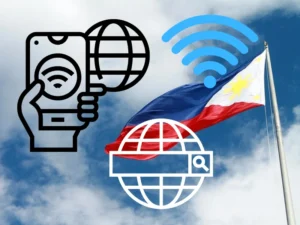In a world that thrives on technology and connectivity, the Philippines is grappling with a growing threat that has engulfed its society: digital addiction. As the virtual realm becomes more influential in our lives, the boundaries between reality and the digital world blur, leaving individuals stuck in a web of addiction.
In this post we dive headlong into the overview of digital addiction in the Philippines, revealing the startling numbers and shedding light on government efforts to address this modern affliction.

Between 68 percent and 72 percent of Filipinos, about 76 million, have access to the Internet, with Filipino users having the highest average daily online consumption duration in the Southeast Asian region, at about 10 hours. This behavior, which significantly exceeds the global average of 6 hours, testifies to the high degree of digital immersion of the Filipino population. In addition, there is a growth in Internet users of about 2.8 percent per year. These figures show how widespread the Internet is in this nation and underscore the importance of addressing the issue of digital addiction.
The low cost of addiction
Another factor fueling digital addiction in the Philippines is the spread of low-cost devices. As prices have come down, smartphones, tablets, and computers have become accessible to more and more people. This has enabled even the poorest segments of the population to enter the digital world. In addition, the availability of low-cost data plans offered by mobile operators has further facilitated access to the Internet. While this democratization of technology has made access to information more equitable and opened up new possibilities for learning and development, it has also increased the risk of digital addiction, especially among young people who spend more and more time on their devices.
Internet prices and speed
The best cheap phone in the Philippines falls in the PHP 3,000 to PHP 10,000 price range. Considering the current exchange rate, which is approximately 0.017 per 1 PHP, the price in euros ranges from about 58 dollars to 190 dollars.
Despite the widespread use of the Internet in the Philippines, the average connection speed is quite low at 2.8 Mbps. This figure ranks the country 104th among 160 nations. In contrast, developed Asian countries such as South Korea and Singapore, with average speeds of 23.6 Mbps and 12.9 Mbps respectively, rank first and 12th. This discrepancy underscores the need to improve the technological infrastructure in the Philippines to provide faster and more efficient Internet access.
The average cost of an Internet connection in the Philippines varies by plan and service provider. However, in general, prices can range from PHP 999 (about $17) per month for a basic plan with a connection speed of 5 Mbps, up to PHP 3499 (about $59) per month for premium plans offering connection speeds of 100 Mbps or higher. The average monthly income per capita in the Philippines is about PHP 10,000 (about 170 dollars).
Evident causes of digital dependence in the Philippines
The causes of addiction in the Philippines can be compared to those of digital addiction in other Asian countries. First, cheap access to digital devices has led to an increase in Internet use, especially among young people. These devices, such as smartphones and tablets, are often used as entertainment tools, causing an addiction to social media, online games, and other forms of digital entertainment. In addition, social pressure to stay “connected” and the habit of using digital devices as a means of escapism from reality can contribute to digital addiction. Finally, the lack of regulation and awareness about the potential consequences of excessive Internet use can further exacerbate the problem.
What is the Philippine government doing against digital addiction?
The Philippine government is taking a number of measures to combat technology addiction. These include working to improve digital education, with the goal of raising awareness of the risks of excessive use of digital devices. School curricula are beginning to include lessons on how to use the Internet safely and responsibly. In addition, the government is also exploring the possibility of introducing laws restricting Internet use, especially among minors. Efforts are also being made to promote alternative activities to time spent online, such as sports and reading, to mitigate the attractiveness of digital devices. However, these measures are still being implemented and their long-term impact remains to be seen.
UNICEF also helps
One organization needed in this area is UNICEF, which has launched an initiative to make the digital world safer for children while increasing online access for the most disadvantaged. This project aims to protect children from potential harm from Internet use while ensuring their basic rights to information and communication. UNICEF argues that safe and inclusive access to the Internet can play a crucial role in children’s development by providing opportunities for learning and personal expression. At the same time, the organization stresses the importance of effective regulatory methods and safety measures to minimize the risks associated with Internet use, such as cyberbullying, online abuse and exposure to harmful content. UNICEF’s efforts highlight the importance of a balanced approach to addressing the issue of digital addiction, combining protection and empowerment of young Internet users.
[…] addiction has become a growing problem around the world. Asia, and especially the Philippines, seem to be particularly affected by this condition. In this article we will explore the reasons […]
[…] on the rise, with many treatment centers being established. Recall that Asia, and especially the Philippines, is where digital addiction is most prevalent in the world. In Japan, the Kurihama Medical and […]